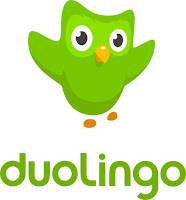Language Learning Tools
** disclaimer - some of the links point to stores but I am not affiliated with these stores. I am only a user and paid full price for the software mentioned below. **
Just posting a quick comparison between two language learning tools I currently use.
First Some Of The Basics
Rosetta Stone cost between $250-$300 for the hard copy disk program with audio CD. Current Online subscription service is $299 for 3 years/36 months. I've used their Windows platform, Web subscription service, and smartphone mobile platform on Android. Therefore my comments are only based on these items.
Duolingo online service cost is free to use. They make their money to support the service via a distributed translation services often provided by the students and members and voted upon for accuracy by the same members. Obviously they stand behind their product if their students language abilities are the source of their income.
My Impression
Rosetta Stone claims to teach you the way you learned your first language. In a way it does via straight language learning without translation and only visual/audio clues. Basically you learn by rote but with visual/audio aides. However they forget that as a child one normally makes a game of learning to make it enjoyable. We create rhymes, sing songs, use code words, and act out scenes from a movie. It does have matching games but I wouldn't call them fun. The software also has what I consider a poor contextual help system. For example if you get stuck on a section were you don't understand why a certain verb or noun is used you can't click the help menu to get details as to the reason for your error or why the answer given is the correct one. This software also provides voice recognition to help with pronunciation. It actually works rather well most times. The smartphone app is nothing more than the same learning system found on the desktop version on your phone/tablet. I removed it 2 days after installing it. They do provide a headset with the software but it's pretty much garbage. Another included perk is the audio CD companion. You'll never use it. It is basically the software's audio files put to disk. There is no context at all. So forget about taking it on a long drive to learn the language. DO NOT let the headset or audio CD be a deciding purchasing factor. So by now you may think this guy doesn't like the software. Well yes and no. The subscription service is far better than the software tool. While the subscription service does have the same learning system described above it also provides user forums, classes, and chat rooms to help you learn the language. Rosetta Stone also has far more depth than most when you get to the higher levels.
Duolingo is a free online language learning service. I came across it after much hoopla on forums and app suggestions by Google Play. All I can say is Wow. Although it's a free service the quality is not lacking. You can access to interface via web browser, Android app, Iphone App, and a flash card app for your android wear watch. It's learning system is similar to Rosetta Stone in that you are taught without translation. However translation and contextual help is always available. You get visual/audio cues and every word and error message will link you to a language support forum, translation, or audio bite. The online support groups and chat rooms are great for reinforcing lessons. Language learning is treated like a game. You win trophies and points which may be redeemed for flare to dress up your Avatar or for cool Idioms/lessons you can access to add to your language skills. You don't get an audio CD for learning on those long drives but at this price you can buy the
Instant Immersion series for $40 and still come in hundreds under the cost of Rosetta Stone. The flash card program you get on your watch is great for those moments your are free to practice your vocabulary. If you have 3 minutes you can build your vocabulary on the go from your watch.
My Final Thoughts
So what to buy?
If you are tight on cash or not sure about your resolve to learn a new language go with Duolingo. It won't bankrupt you and you can take it as far as you need or like. If you're not short on cash then go with Duolingo and an audio CD program such as
Instant Immersion. Once you feel you have mastered those two you may want to sign up for the Rosetta Stone subscription service. Don't start off with Rosetta Stone. Spending the money up front does not guarantee you will stick with the course. And the frustration you'll feel from Rosetta Stone at the beginning will almost certainly cause you to quit before you get a chance to learn anything useful.






 Sling TV Starting Page on Windows Application. As you can see it's very simple with minimal detail for quick channel navigation.
Sling TV Starting Page on Windows Application. As you can see it's very simple with minimal detail for quick channel navigation. Sling TV settings panel showing Parental, Bandwidth, and Closed Caption control
Sling TV settings panel showing Parental, Bandwidth, and Closed Caption control